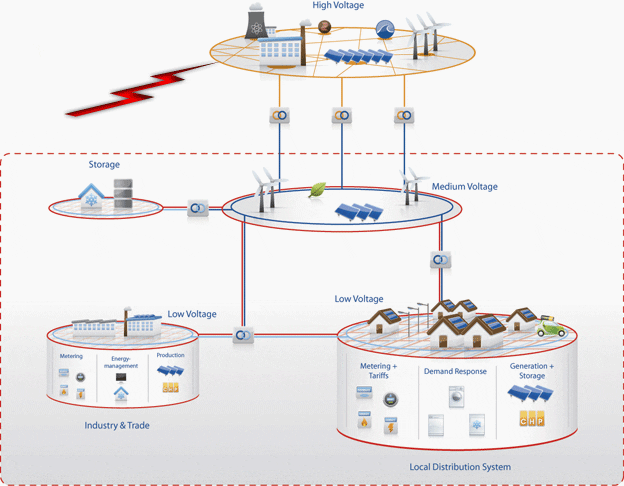
In the Smart Grid, there are two key purposes for cyber security:
Power system reliability
Keep electricity flowing to customers, businesses, and industry. For decades, the power system industry has been developing extensive and sophisticated systems and equipment to avoid or shorten power system outages.
In fact, power system operations have been termed the largest and most complex machine in the world.
Although there are definitely new areas of cyber security concerns for power system reliability as technology opens new opportunities and challenges, nonetheless, the existing energy management systems and equipment, possibly enhanced and expanded, should remain as key cyber security solutions.
Confidentiality and privacy of customers
As the Smart Grid reaches into homes and businesses, and as customers increasingly participate in managing their energy, confidentiality and privacy of their information has increasingly become a concern.
Critical issues for the security requirements of power system
Power system operations pose many security challenges that are different from most other industries. For instance, most security measures were developed to counter hackers on the Internet.
The Internet environment is vastly different from the power system operations environment. Therefore, in the security industry there is typically a lack of understanding of the security requirements and the potential impact of security measures on the communication requirements of power system operations.
In particular, the security services and technologies have been developed primarily for industries that do not have many of the strict performance and reliability requirements that are needed by power system operations.
Security services for instance:
- Operation of the power system must continue 24×7 with high availability (e.g. 99.99% for SCADA and higher for protective relaying) regardless of any compromise in security or the implementation of security measures which hinder normal or emergency power system operations.
- Power system operations must be able to continue during any security attack or compromise (as much as possible).
- Power system operations must recover quickly after a security attack or compromised information system.
- The complex and many-fold interfaces and interactions across this largest machine of the world – the power system – makes security particularly difficult since it is not easy to separate the automation and control systems into distinct “security domains”. And yet end-to-end security is critical.
- There is not a one-size-fits-all set of security practices for any particular system or for any particular power system environment.
- Testing of security measures cannot be allowed to impact power system operations.
- Balance is needed between security measures and power system operational requirements. Absolute security may be achievable, but is undesirable because of the loss of functionality that would be necessary to achieve this near perfect state.
- Balance is also needed between risk and the cost of implementing the security measures.
How can security requirements for smart grid interfaces be determined?
That said, “typical” security requirements can be developed for different types of interfaces which can then be used as checklists or guidelines for actual implementations.
Typically, security requirements address the integrity, confidentiality, and availability of data. However, in the Smart Grid, the complexity of stakeholders, systems, devices, networks, and environments precludes simple or one-size-fits-all security solutions. Therefore, additional criteria must be used in determining the cyber security requirements before selecting the cyber security measures.
These additional criteria must take into account the characteristics of the interface, including the constraints and issu es posed by device and network technologies, the existence of legacy systems, varying organizational structures, regulatory and legal policies, and cost criteria.
Once these interface characteristics are applied, then cyber security requirements can be applied that are both specific enough to be applicable to the interfaces, while general enough to permit the implementation of different cyber security solutions that meet the cyber security requirements or embrace new security technologies as they are developed. This cyber security information can then be used in subsequent steps to select c yber security controls for the Smart Grid.
Reference: White Paper: Cyber Security Issues for the Smart Grid – Frances Cleveland, Xanthus Consulting International










